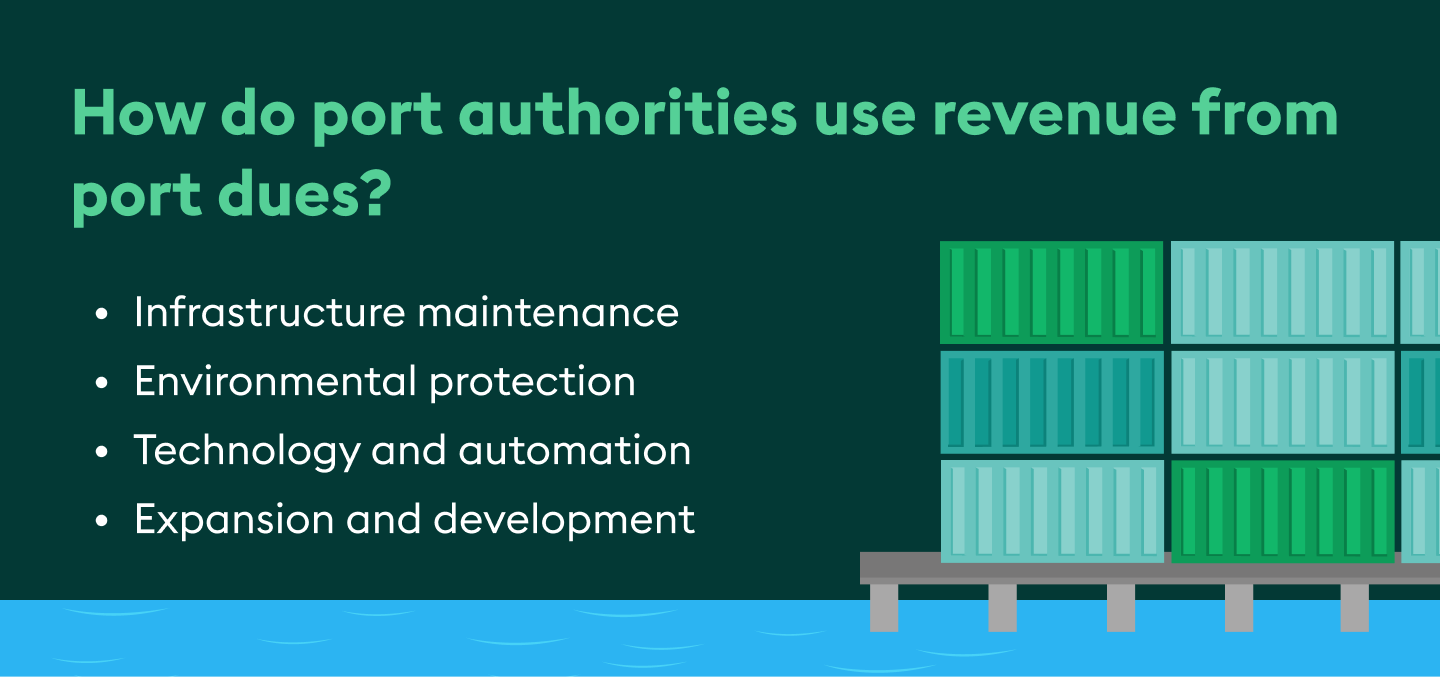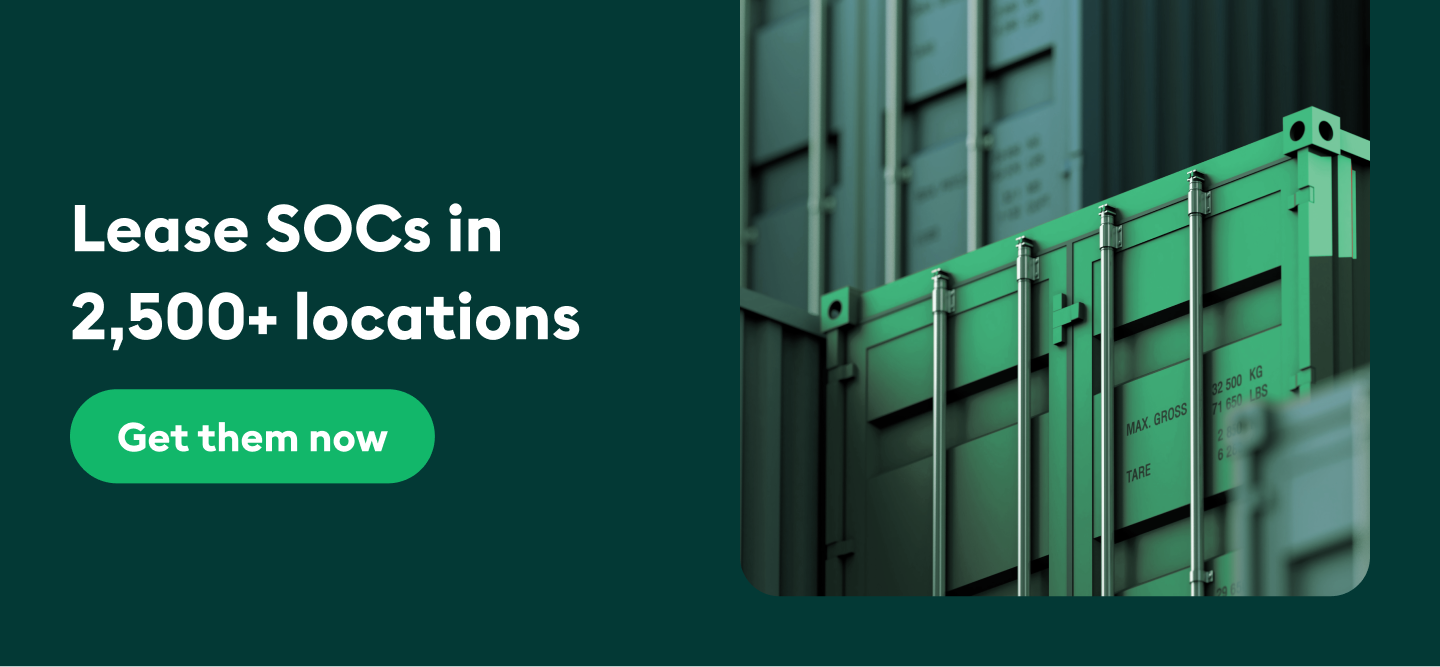Paying port dues is an essential part of the shipping process, and these charges are unavoidable. But there are ways you can reduce your overall shipping costs. Read this blog to find out how you can save money and maximize your profits.
Port dues are one of the many charges that shipping companies and carriers have to pay to ship cargo. These charges help fund and maintain the port infrastructure.
Although you can’t avoid paying port dues, fees like demurrage and detention can be avoided. How? By using shipper-owned containers (SOCs) instead of carrier-owned containers (COCs). When you use SOCs, you’re not obligated to move and/or return the containers to the carrier within a certain time frame. This way, you don’t have to worry about paying hefty demurrage and detention charges.
Want to get your hands on SOCs? Container xChange is the exact platform you need to lease these containers at the best rates.
Try out our leasing search below to see available containers and the current leasing rates for your route
25 x 40HC
Container Supplier
Container Company Blurred Name
5
Pick-up charge
User pays
$120
19 Freedays
$44.20 Per diem
What are port dues?
Port dues refer to the fees or charges imposed on ships or vessels for using a port’s facilities and services. These charges are typically levied by port authorities to cover the costs associated with maintaining and operating port infrastructure.
Port dues may vary based on the size of the vessel, the type of cargo being transported, the duration of the stay in the port, and the services utilized. For example, a smaller vessel that docks overnight would have a much lower charge than a larger vessel that docks during the day.
It’s important to note that port dues are just one component of the overall costs incurred by shipping companies and are separate from other charges such as cargo dues and tonnage dues. Let’s take a look at how these three charges differ from each other.
Cargo dues and tonnage dues vs port dues
Cargo dues, often abbreviated as CD and known as wharfageWhat is Wharfage? A wharf is a man-made, fixed structure where the vessels can dock for safe loading and unloading of cargo. Wharfage refers to the fee for using the wharf (also called quay) to store ... More in some countries, are charges imposed on the cargo handled at a port. Unlike port dues, which are levied on the vessel, cargo dues pertain to the goods being loaded or unloaded at the port facilities. Cargo dues are calculated based on the quantity or weight of the cargo and may vary depending on the type of goods and the facilities used.
Tonnage dues, on the other hand, are charges imposed on ships based on the size or tonnage of the vessel. The tonnage used for calculating these dues is often expressed in terms of gross registered tonnage (GRT) or net registered tonnage (NRT), which are measurements of a ship’s internal volume. The GRT excludes the weight of fuel, food, water, spares, ship’s equipment, and crew.
These are just a few of the many charges collected by port authorities. Before we discuss other expenses in detail, let’s understand how port authorities utilize the revenue generated from these fees.
How do port authorities utilize revenue from port dues?
Port authorities utilize revenue from port dues to cover the costs associated with maintaining, operating, and improving port infrastructure and services.

The specific allocation of funds can vary, but generally, the revenue generated from port dues is used for the following purposes:
-Infrastructure maintenance: Port authorities allocate funds to maintain and repair the physical infrastructure of the port, including berths, quays, navigational channels, and cargo-handling facilities. Regular maintenance is essential to ensure the safety and efficiency of port operations.
-Environmental protection: Ports may allocate funds for environmental initiatives, including pollution control, waste management, and other measures to create sustainable ports.
-Technology and automation: Port authorities may invest in technology and automation to enhance the efficiency of cargo handling, vessel operations, and overall port management.
-Expansion and development: Port authorities also use funds to invest in the expansion and development of port facilities to accommodate growing maritime traffic and enhance the overall capacity of the port.
Let’s look at some other charges that port authorities levy to maintain their infrastructure.
Other common types of port charges
Here is a small list of port charges that are common in shipping.
- Terminal handling charge: The Terminal Handling Charge (THC) is a fee collected by terminal operators for various services related to containers. These services include loading, unloading, storage, movement, and maintenance at terminals, container freight stations, or even wharves
- Port storage charges: Port storage charges are paid for the space occupied by the container within the terminal grounds, warehouse, or container yard. This storage period starts as soon as your containers enter the storage facility and ends when they’re taken out of the territory.
- Depot handling charges: Container depot charges in shipping are associated with the storage, maintenance, and handling of shipping containers at container depots.
While you can’t get around to paying the charges we’ve discussed above, there are other fees, like demurrage and detention, that you can completely avoid. Read on to find out more.
Port dues vs demurrage and detention charges
While port dues are fees imposed on ships by port authorities for using port facilities, demurrage and detention charges are incurred by cargo owners for delays in the use of port facilities.
Demurrage charge: Demurrage refers to the fee that is paid for the use of the container within the terminal or port beyond the allotted free days.
Detention charge: It is the fee that is paid for the use of the container outside of the terminal or depot, beyond the free period. If you hold on to a carrier’s container for longer than the allowed free days, you will be charged with detention.
Demurrage and detention charges can cost you hundreds of dollars every day. These charges are further increased if there is port congestion or port delays. They can significantly increase the cost of shipping, at no fault of yours. However, there is a way you can circumvent these charges and ship your cargo at low prices.
How to avoid port charges with SOC containers
Using shipper-owned containers (SOCs) instead of COCs is a great way to circumvent demurrage and detention charges. When you’re using SOC, you’re essentially leasing it from the container owner. The owners also prefer this arrangement, as you’re repositioning their containers and saving them money on storage and repositioning. It’s a win-win situation!
But how do you connect with container owners? If you depend on traditional sourcing channels, you’ll need to contact multiple container owners and make sure they have containers in your desired location. Then, you’ll have to compare the prices and negotiate deals individually. With this manual process, you’ll be spending a lot of time waiting to finalize a deal.
But there’s a way you can get SOCs easily in 2,500+ locations worldwide.
Lease SOCs on Container xChange to avoid expensive shipping charges
On our leasing platform, you can book SOCs from 1,700 vetted companies in 2,500+ locations globally. All you have to do is fill in your requirements, including the container type, pick-up and drop-off locations. Then, you’ll get multiple offers from vetted lessors. We have 100,000+ containers available, making it easier to find your ideal containers than other sourcing channels.
Compare the prices on a single dashboard and reduce the time spent contacting different companies. You can also negotiate for better leasing rates with the companies on our platform and keep your transaction safe with our easy payment handling feature – the xChange wallet.
With the xChange container tracking feature, track all your containers in one place and receive tracking alerts in case some containers require your attention. This way, you can avoid paying any additional port charges and ship your cargo at the best prices.
You get all this on a single platform. Make your move today and grab a great deal on containers right now by clicking the banner below.
Port dues: Common FAQs
Why do ports charge port dues?
Port authorities charge port dues to generate revenue for maintaining and operating port infrastructure and services. These fees contribute to the upkeep of navigational channels, safety measures, and various facilities, ensuring the smooth functioning and development of the port.
How do you calculate port dues?
Port dues are calculated based on the size of the vessel, the type of cargo being transported, the duration of the stay in the port, and the services utilized. The specific formula and rates may vary among ports, but the charges aim to reflect the size and resources required to support vessels calling at the port.
Who pays port dues?
Port dues are typically paid by the owners or operators of the vessels calling at the port to the port authorities.



